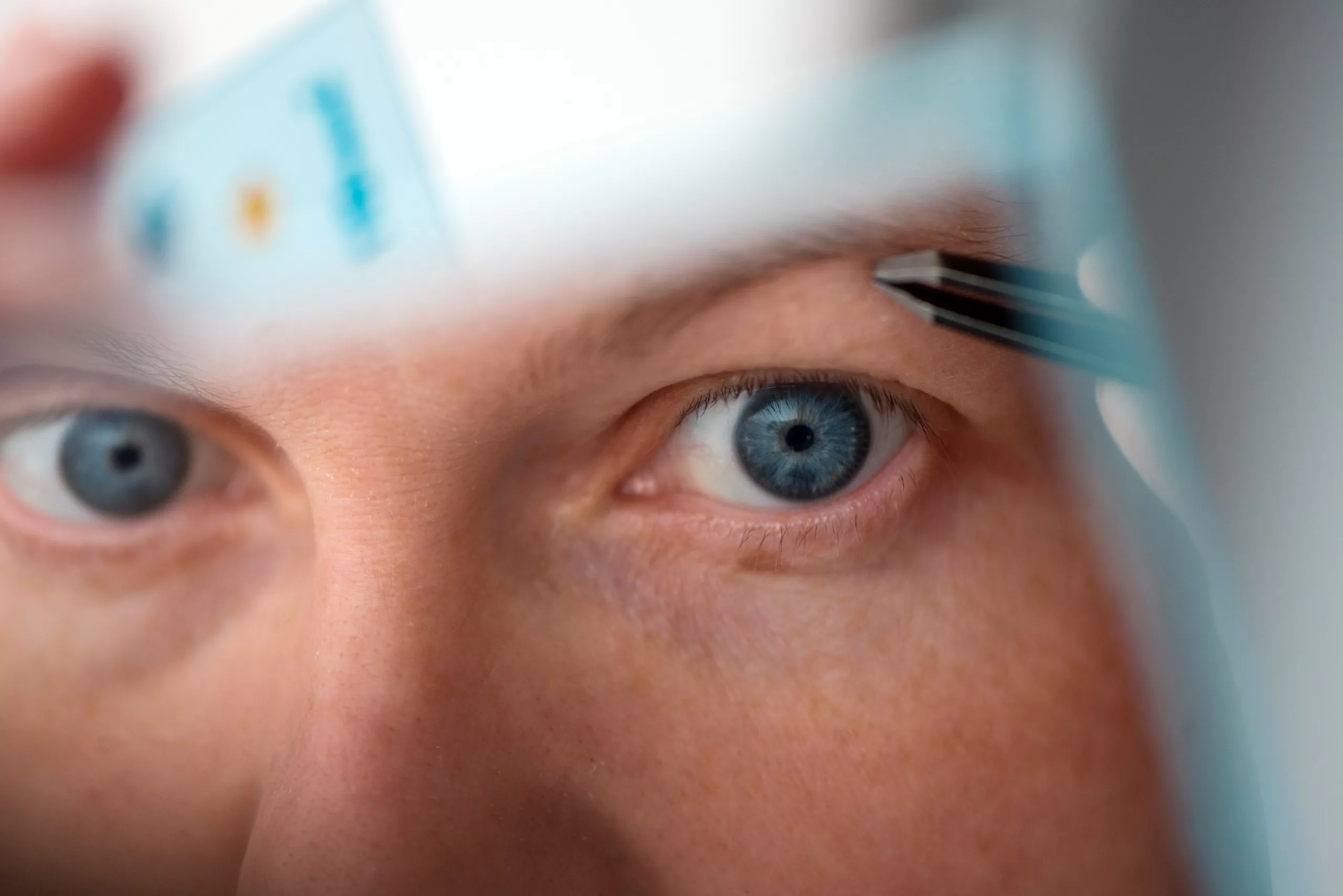Exploring Pupillary Distance (Interpupillary Distance)
Introduction
Pupillary distance (PD), or interpupillary distance (IPD), stands as a cornerstone in the domain of optometry, delineating the precise span between the centers of the pupils. This measurement holds profound significance in the fitting and customization of eyeglasses, pivotal for ensuring optimal alignment of lenses with the eyes. This article elucidates the multifaceted importance of pupillary distance, elucidates diverse measurement methodologies, and underscores its paramount relevance in the meticulous fitting of eyewear.
Understanding Pupillary Distance
Pupillary distance (PD), interchangeably referred to as interpupillary distance (IPD), assumes a pivotal role within optometry, serving as a vital metric that gauges the distance between the centers of the pupils within the eyes. This dimension holds particular significance in the domain fitting and customization of eyewear, facilitating the precise alignment of lenses with the visual axis.
Why is Pupillary Distance Important?
- Optimal Vision Correction: Eyeglasses lenses must be positioned accurately in front of the pupils to provide the best vision correction. Incorrect PD measurements can lead to eyestrain, headaches, and visual discomfort.
- Lens Alignment: Proper alignment of the lenses with the pupils ensures that the wearer looks through the optical center of the lenses. This is particularly crucial for people with higher prescriptions or those requiring multifocal lenses.
- Binocular Vision: Maintaining the correct PD promotes binocular vision, where both eyes work together seamlessly. This is essential for depth perception, coordination, and overall visual comfort.
How is Pupillary Distance Measured?
- Traditional Measurement Techniques: Optometrists traditionally measure pupillary distance using a specialized tool called a pupilometer. This handheld device enables precise measurement of the distance between the centers of the pupils.
- Digital Measurement Technologies: In recent years, digital technologies have revolutionized pupillary distance measurement. Advanced software and imaging systems allow for highly accurate and efficient PD measurements, often integrated into modern optometric equipment.
- Monocular PD vs. Binocular PD: Monocular PD refers to the distance from the center of each pupil to the bridge of the nose. Binocular PD is the total distance between the centers of both pupils. While binocular PD is typically used for eyeglass prescriptions, monocular PD may be necessary for certain types of lenses.
- Average Values: The average adult PD ranges from 54 to 74 millimeters, with males generally having slightly wider PDs than females. However, individual variations exist, and accurate measurement is crucial for optimal vision correction.
- Online Measurement: With the advent of telehealth and online eyewear retailers, there are now digital tools available that allow individuals to measure their own pupillary distance at home using a webcam or smartphone camera. While convenient, accuracy may vary depending on the quality of the device and the individual’s ability to follow instructions.
Importance in Eyeglass Fitting
- Customized Eyewear: Knowing the precise PD allows for the customization of eyeglasses to fit the unique facial anatomy of each individual. This is particularly important for ensuring visual comfort and aesthetics.
- Online Eyewear Purchases: When ordering glasses online, accurate PD measurement is essential. Some websites offer guidance on self-measurement using a ruler or specialized tool. However, for optimal results, it is recommended to have PD measured by a professional.
Conclusion
Pupillary distance is a fundamental measurement in optometry that influences the fit and performance of eyeglasses. By ensuring accurate PD measurement, eyecare professionals can provide patients with customized eyewear that optimizes vision correction, comfort, and visual aesthetics. Whether obtained through traditional methods or modern digital techniques, precise PD measurement plays a crucial role in enhancing the overall eyewear experience.
World Eye Care Foundation’s eyecare.live brings you the latest information from various industry sources and experts in eye health and vision care. Please consult with your eye care provider for more general information and specific eye conditions. We do not provide any medical advice, suggestions or recommendations in any health conditions.
Commonly Asked Questions
Apart from traditional methods, digital technologies have emerged, allowing for accurate measurement using advanced imaging systems integrated into modern optometric equipment.
Correct PD measurement promotes binocular vision, essential for depth perception, coordination, and overall visual comfort.
While some websites offer guidance for self-measurement, it’s recommended to have your PD measured by a professional for accurate results, especially for online eyewear purchases.
Generally, males have slightly wider PDs than females, but individual variations are common and should be accounted for during eyewear fitting.
Optometrists traditionally use a pupilometer, a specialized handheld device, to measure pupillary distance accurately.
While binocular PD is typically used for eyeglass prescriptions, monocular PD may be necessary for certain types of lenses, especially for people with significant facial asymmetry.
Incorrect PD measurements can lead to eyestrain, headaches, and visual discomfort due to improper alignment of lenses with the eyes’ visual axis.
Pupillary distance ensures that eyeglass lenses are positioned accurately in front of the pupils, providing optimal vision correction, reducing eyestrain, and enhancing visual comfort.
Yes, there are digital tools available for at-home measurement using a webcam or smartphone camera. However, accuracy may vary, and professional measurement is recommended for optimal results.
The average adult pupillary distance ranges from 54 to 74 millimeters, with slight differences between genders. However, individual variations exist, making accurate measurement crucial.
news via inbox
Subscribe here to get latest updates !







